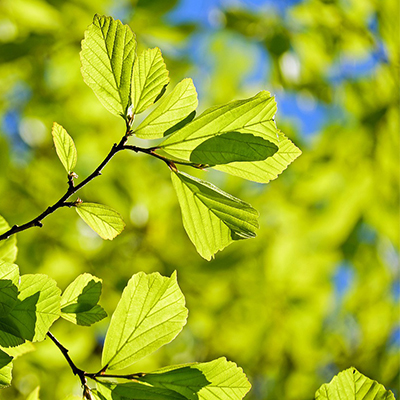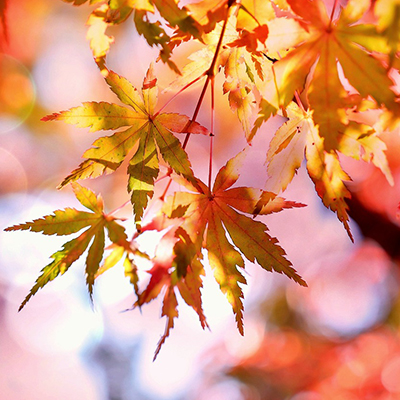How to judge good cutlery
- Viewed externally, a good blade is one that has been edged and polished well. It should also have a good balance when held in your hand.
- Internally speaking, a good blade should be made with a material that matches the product, and be heated to a suitable hardness. *Hedge shears suitable hardness range
| Full steel | HRC57~60 |
| Clad steel | HRC58~61 |
| Refined and hardened (double hardened) | Blade edge HRC57~60 |
| Stainless steel | HRC58~61 |
The best way to use bladed tools
- Trim trees with sharp hedge shears to prevent damaging the tree.
- Hold the middle of the handles to maintain balance and avoid getting tired.
- Fix one handle in place (stationary blade) and move the other (moving blade) to trim cleanly. For round trimming, use the reverse side of the shears.
- Branches up to 1 cm wide can be removed with a single cut. Wider branches must be cut using the base of the blades. However, this can lead to nicking the blade and shortening the blade life. When possible, use thick branch shears, a hatchet, or another tool dedicated to the task.
- At first, start off cutting slim branches.
- After use, clean off the tree tannin and lubricate the blades.
- When sharpening, opening the blades and sharpen the top(front) first, then sharpen the reverse side at the same angle so as to remove burrs.
Why is trimming necessary?
Each garden plant has its own beautiful natural shape. However, you have to make the most of those shapes within the limited space of a garden. And since you are raising the plants to be appreciated for many years, you must keep them in good condition.
If you do not maintain your plants, they will become overgrown, destroying the shape of your garden and causing branches to grow thickly. This can lead to pests, which will lessening the resistance of the trunks and branches, and weakening the tree overall. Flowering plants will not get enough sunlight, reducing the number of flowers they grow, and preventing flowers from blooming.
The purpose of trimming is to prevent these things from happening and keep your garden plants in good form as long as possible.
Trimming methods by season

Spring

Trim deciduous trees between February and March, before they start budding. When trees come into leaf in April, trimming will have a significant effect. However, you can do things like remove branch overgrowth and picking flowers that are in bloom. Old leaves fall between April and June to be replaced with new ones, so this timing is ideal.
Summer

Branches that grew in spring temporarily stop growing before the rainy season, making this the optimal timing for trimming to maintain tree shape. However, the trees are storing nutrients, so you should avoid intense trimming. In the case of branch overgrowth and spindly growth impairing the tree’s shape, lightly cut and shape the ends of branches. This is the season when the buds of flowering plants are differentiated, so take care when trimming these plants.
Fall

In this season, deciduous trees have yet to lose their leaves, and branches experience their most radical growth, so intense trimming should be avoided. To cut and shape fall shoots that have finished growing and promote uniform growth in the following spring, lightly cut the ends.
If you trim intensely in fall, the stimulation can cause leaves to fall later than usual when there are long periods of warm days, branches will grow and develop fall sprouts, and these sprouts will be damaged by the cold, having a negative effect on the tree’s form.
Winter

In this season, deciduous trees have lost all of their leaves and entered their dormant period, making this the time when they will be least damaged by trimming. Since there are no leaves, it is easy to spot branch overgrowth and unnaturally grown branches, making this a good season for maintaining the trees’ shapes. Evergreen trees are weakened by the cold, so they should be avoided.
